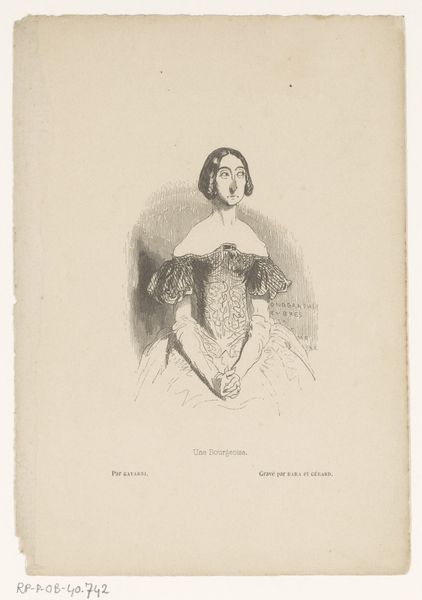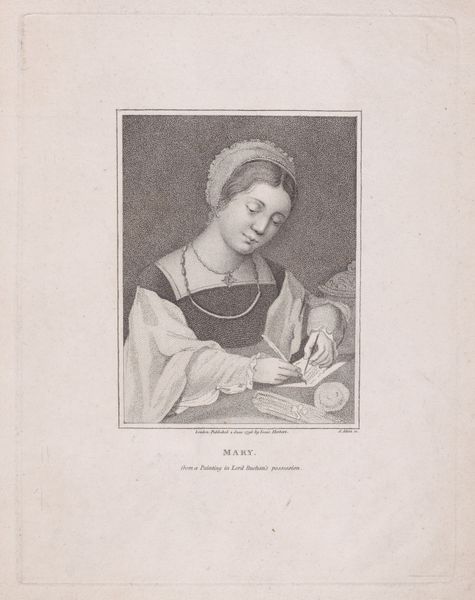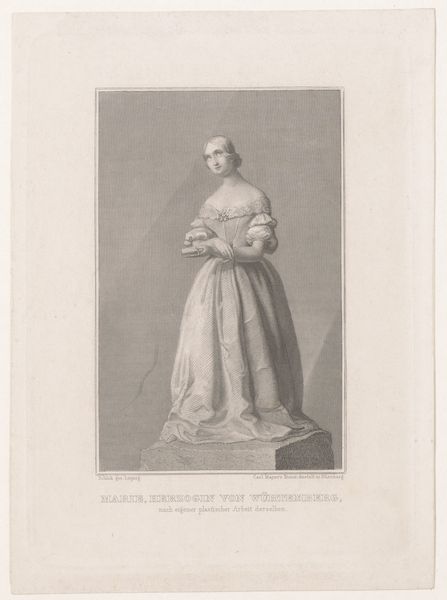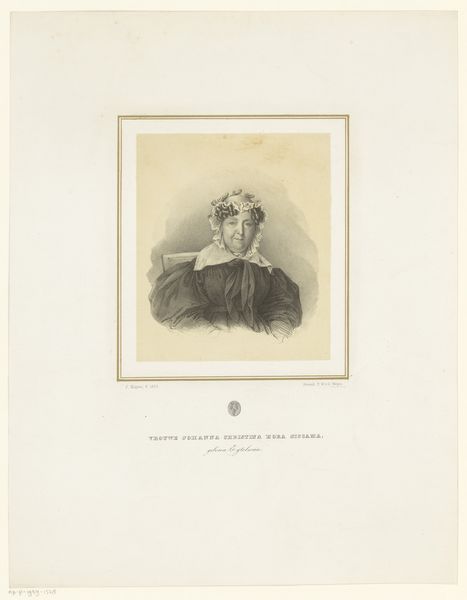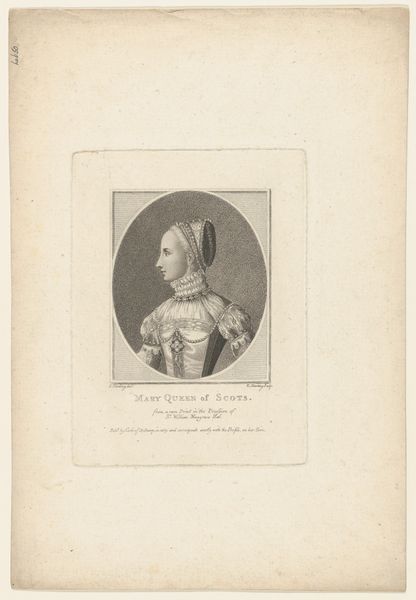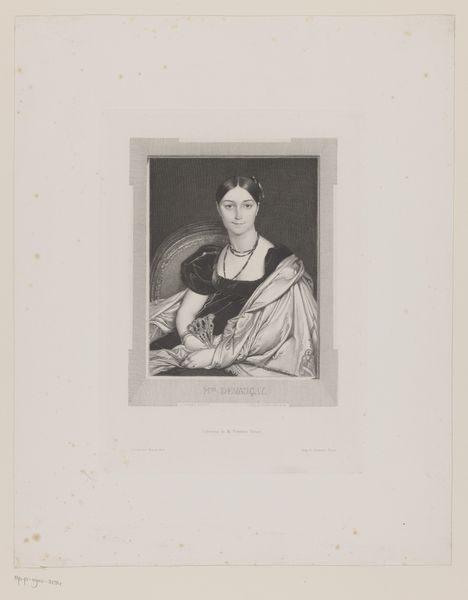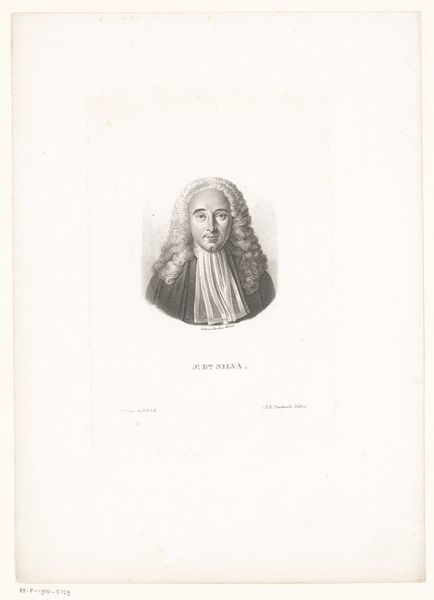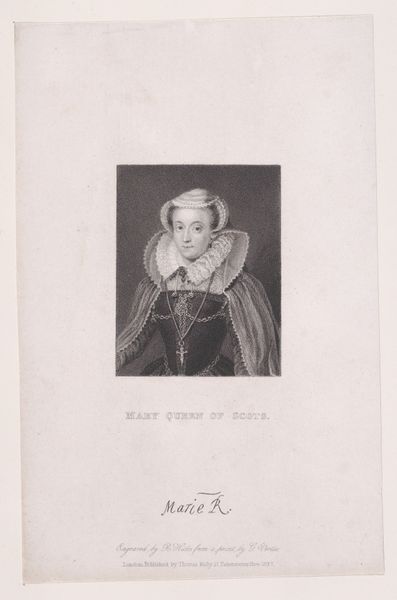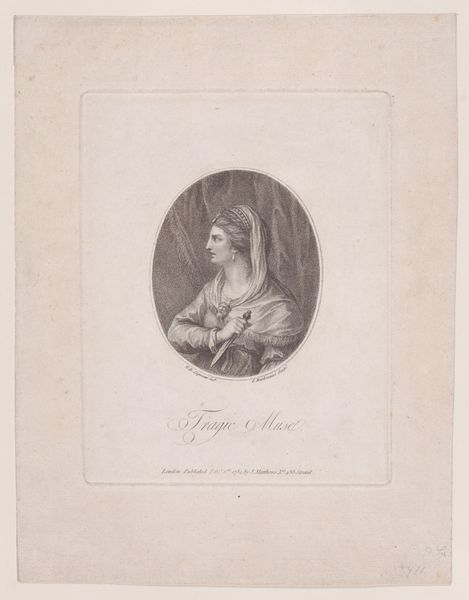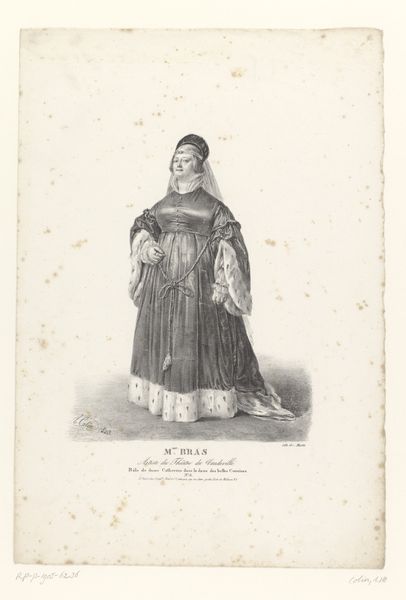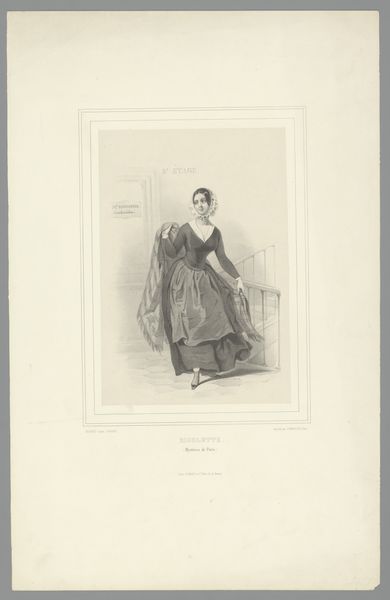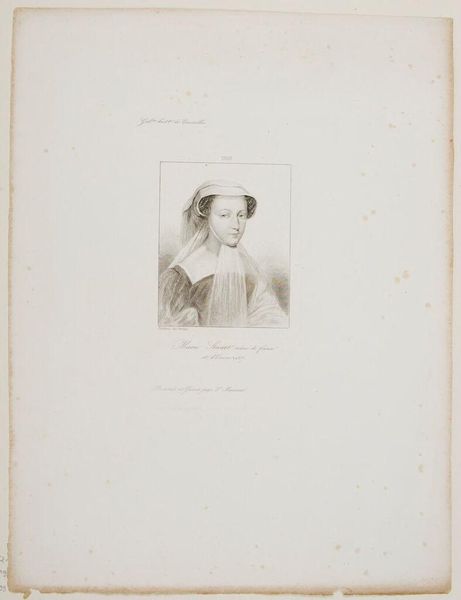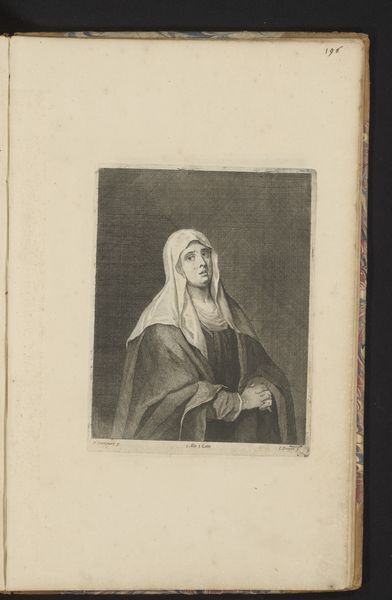
drawing, print, engraving
#
portrait
#
drawing
#
negative space
# print
#
pencil drawing
#
history-painting
#
engraving
Dimensions: Sheet: 10 7/8 × 7 5/16 in. (27.6 × 18.5 cm)
Copyright: Public Domain
Curator: William Thomas Fry's engraving of Mary, Queen of Scots, made in 1833, offers us a glimpse into the 19th-century fascination with this tragic historical figure. Editor: My initial impression is of cool composure. Even through the filter of this medium, you sense the weight of history and, maybe, defiance? Curator: Precisely. This engraving emerged in an era where historical painting and portraiture served as tools for constructing national narratives. Consider how Fry, working in the early 19th century, engages with a figure like Mary, who had become a potent symbol in British history and, importantly, political discourse. Editor: The sharp contrasts are striking; those blacks and whites really make her costume pop. There’s something almost stark about it. It seems fitting, though, for a life marked by dramatic events, no? It is, after all, a rendering of a queen whose life was ripe with plot, imprisonment, and beheadings! The composition draws me in, and her subtle facial expression keeps me wondering. Curator: You're keying into a complex reception history. Mary’s story resonated, particularly amongst the Romantics. Notice how Fry deploys engraving, a reproducible medium, allowing the image, and therefore, the *idea* of Mary, to circulate widely. Editor: It really does give the feeling of… duplication and proliferation! Like propaganda, almost? One that makes a subject endure! Curator: Well, the distribution of such images played a crucial role in shaping public perception. The artistic license here isn't just about aesthetics, but also about contributing to a particular, culturally influenced interpretation. What visual strategies reinforce a favorable—or unfavorable— reading of Mary’s place in the narrative? Editor: Interesting… And here I am, lost in the craftsmanship—that incredibly delicate lace collar, or the detail on the pendant! A reminder that sometimes history *is* in the details. Thank you, as always, for opening my eyes! Curator: And thank you. Examining art through a historical lens always enriches our understanding of both the work itself and the world it inhabits.
Comments
No comments
Be the first to comment and join the conversation on the ultimate creative platform.

